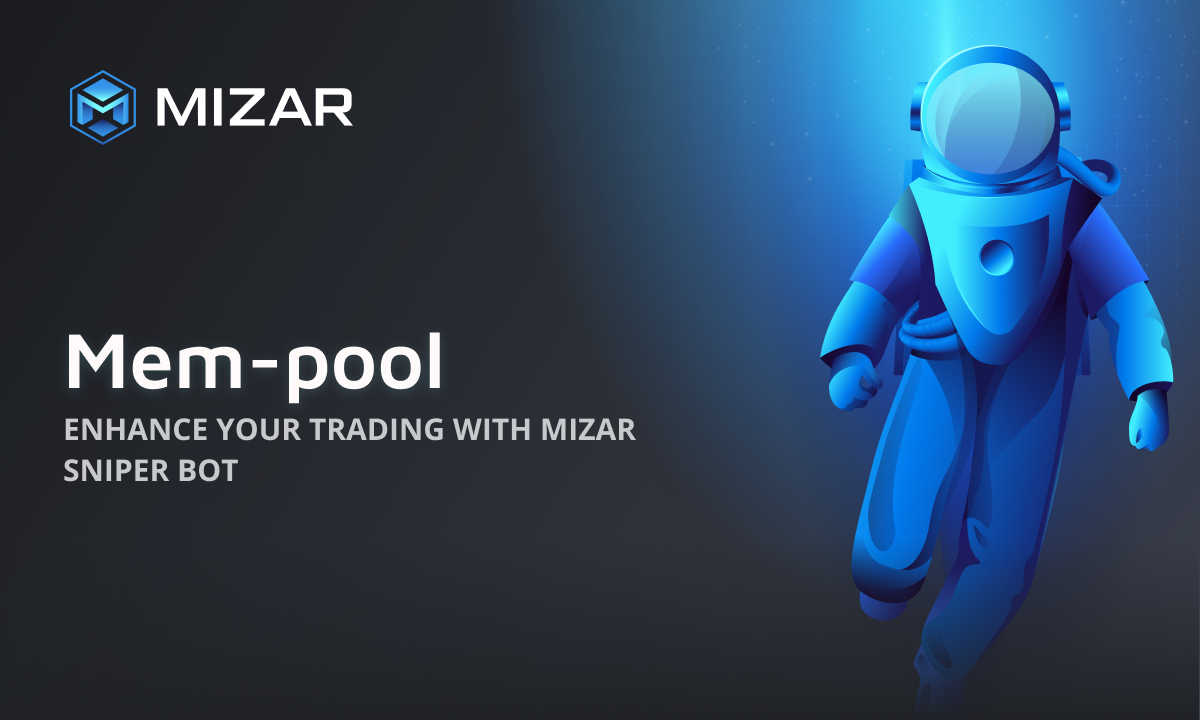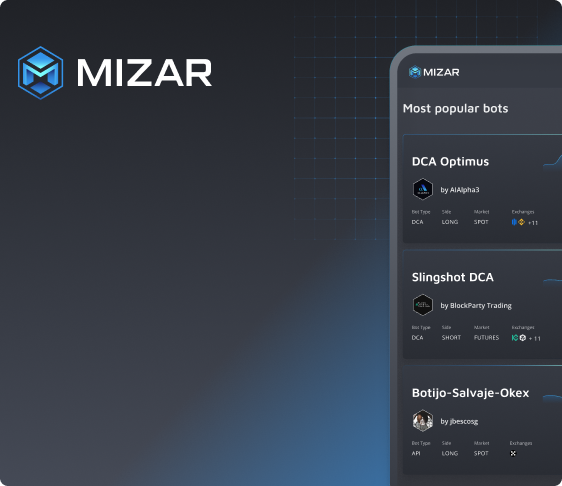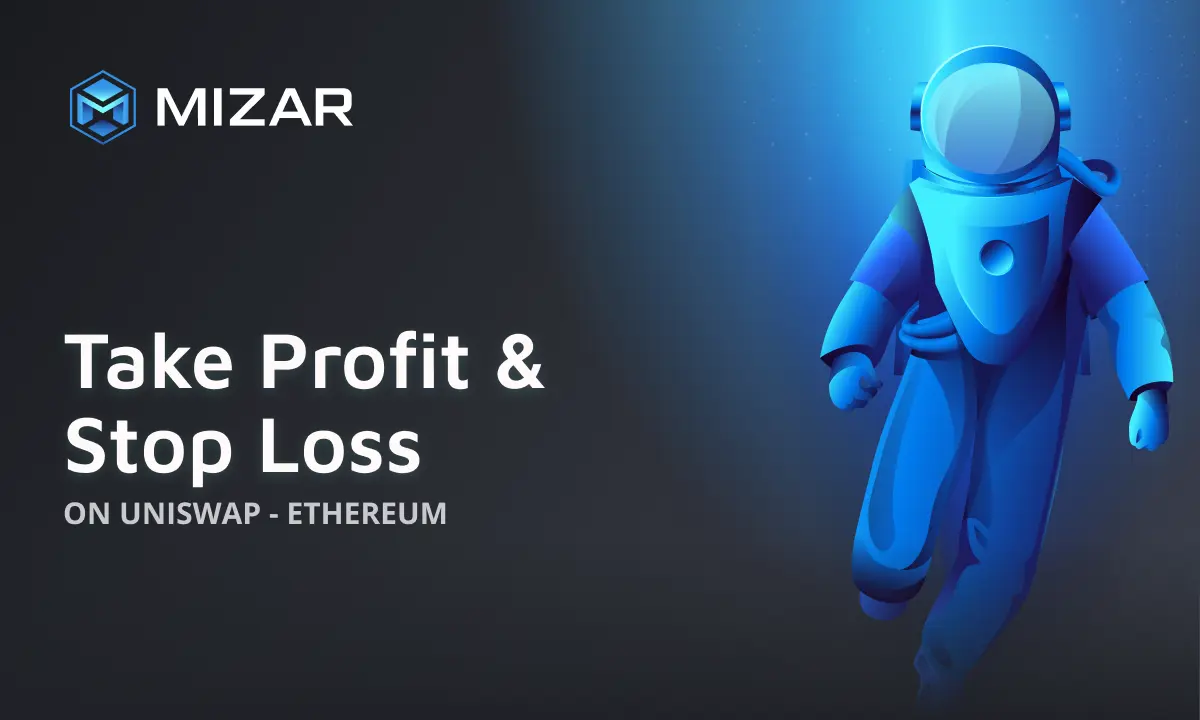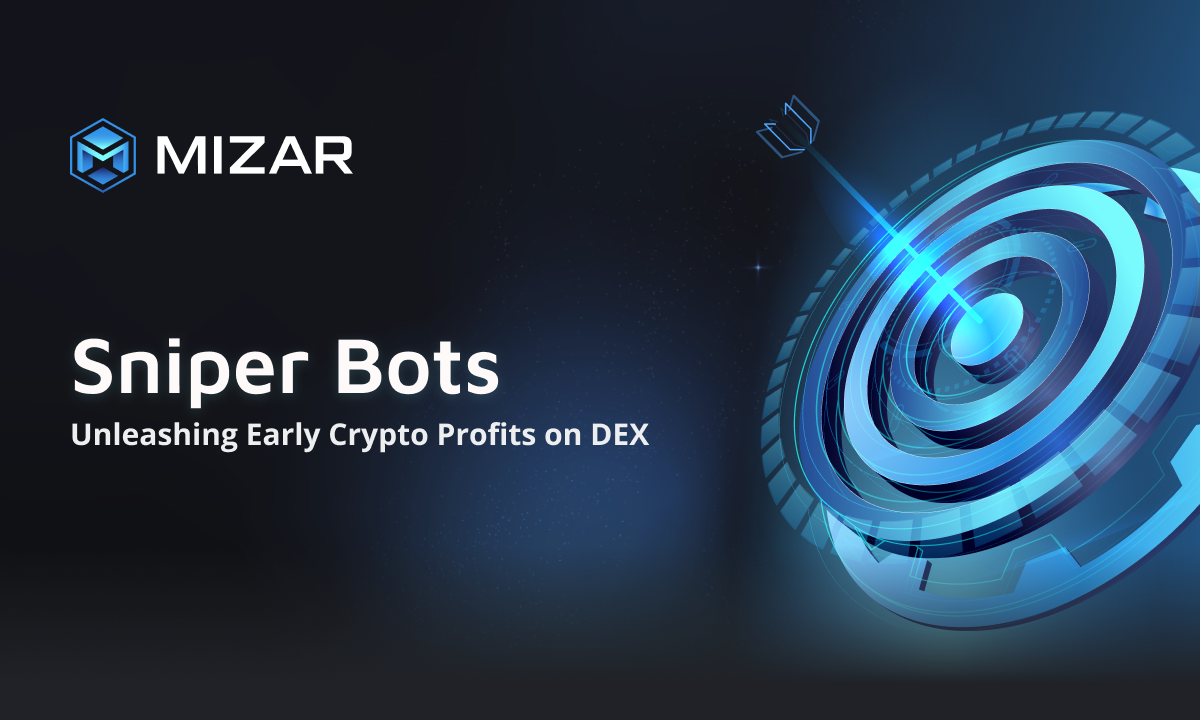Understanding the Mempool in Onchain Crypto Trading

In the world of decentralized exchanges (DEX) and onchain crypto trading, understanding the mempool is crucial. The mempool, short for memory pool, plays a pivotal role in how transactions are processed and executed in blockchain networks like Ethereum.
In this article, we'll explore what a mempool is, its functions, how it operates, and its relevance within the context of onchain crypto DEX trading. We'll also delve into why transactions may be stuck in the mempool and how to address this concern, as well as shed light on the Mizar sniper bot and its utilization of the mempool.
What is a Mempool?
A mempool, also known as a memory pool, or transaction pool, is a fundamental component of a blockchain network. It is essentially a collection of unconfirmed transactions that are waiting to be included in the next block and validated by the network's nodes through the process of mining. These transactions reside in a temporary memory area before they are confirmed and added to the blockchain.
What is a Mempool For?
The primary purpose of a mempool is to temporarily store valid but unconfirmed transactions. This allows the network to manage the order in which transactions are processed and added to the blockchain. Miners typically select transactions from the mempool based on transaction fees (gas fees in Ethereum's case) attached to each transaction. Higher fees incentivize miners to prioritize those transactions, aiming for faster inclusion into the upcoming block.
How Does a Mempool Work?
Transactions initiated on a blockchain network are initially broadcasted to nodes. These transactions are then collected and stored in the mempool. Miners, responsible for creating new blocks on the blockchain, select transactions from this pool based on various factors, such as transaction fees and gas prices. The selected transactions are added to a block and subsequently mined, securing the network and validating the transactions.
Why Is My Transaction Still in the Mempool?
Network Congestion: During times of high network activity, the mempool can become congested, resulting in delayed transaction confirmations.
You Set the Gas Fee Too Low: If you set a lower gas fee, miners may prioritize other transactions with higher fees, causing your transaction to linger in the mempool.
The Hash Rate Drops: A sudden drop in the hash rate of the network can impact the speed at which transactions are processed, leading to delays in transaction confirmations.
How Can I Release My Transaction from the Mempool?
Cancel The Transaction: Depending on the blockchain and wallet you're using, you may have the option to cancel the transaction, removing it from the mempool.
Speed The Transaction Up: You can increase the gas fee associated with your transaction to incentivize miners to prioritize and include it in the next block.
Wait a Bit Longer: Sometimes, waiting for network congestion to ease or for miners to clear the mempool by processing transactions can lead to your transaction being confirmed.
What Can Traders Find in the Mempool?
Transaction Volume: Traders can assess the overall level of activity in the network by observing the size and number of transactions in the mempool. This information can provide insights into market demand and the level of interest in specific cryptocurrencies or tokens.
Transaction Backlog: If there is a significant backlog of transactions in the mempool, it indicates congestion in the network. Traders can anticipate potential delays in transaction confirmations and adjust their trading strategies accordingly. High transaction fees may also be an indication of network congestion.
Transaction Priority: Transactions in the mempool are typically prioritized based on the fees attached to them. Traders can analyze the fee distribution and determine the average fees being paid for fast confirmations. This information can help them decide on appropriate fee levels for their own transactions to ensure timely execution.
Unexecuted Transactions: Traders can identify transactions in the mempool that have not yet been confirmed and added to the blockchain. By monitoring these pending transactions, they can potentially gain insights into market sentiment or identify trading opportunities. For example, if a large buy or sell order is waiting in the mempool, it may signal an upcoming market movement.
Real-time insights from the mempool empower traders to make well-informed decisions. Whether it's adjusting transaction fees, timing trades, or grasping overall market trends, the mempool acts as a treasure trove of knowledge.
Mempool Analysis: Predicting the Future
In a few words, why is mempool analysis cool? Well, you can finally predict the future! Or at least understand it better… Imagine being ahead of the game, getting in on a token the very moment liquidity enters the pool. No rug-pulls can catch you off guard because you're quick to spot massive sell-offs from sneaky contract developers.
Mizar Sniper Bot and Mempool Utilization
In the fast-paced world of onchain crypto DEX trading, timing is everything. Traditional methods of constantly refreshing transaction explorers may not yield the desired results. This is where the Mizar sniper bot comes into play. The Mizar sniper bot utilizes the mempool to gain a strategic advantage.
The Mizar team is making impressive strides in the world of blockchain technology by implementing a robust mempool infrastructure. This significant development lays the foundation for a range of innovative features, all centered around mempool analysis. At its core, Mizar is dedicated to enhancing the security and transparency of cryptocurrency trading for its users.
One of the standout features that Mizar currently offers, completely free of charge, is the ability to protect against rug-pulls. For those uninitiated in the world of cryptocurrencies, a rug-pull refers to a deceptive action undertaken by the creators of a token project. This deceitful maneuver is designed to siphon off investors' hard-earned funds through various cunning techniques. Mizar's ingenious solution is their "sniper bot," a powerful tool that actively monitors the mempool in real-time. When a rug-pull is detected on the horizon, this sniper bot takes swift action, selling your tokens before the malicious act can take place. This proactive approach helps safeguard your investments and fortifies your confidence in the crypto space.
But Mizar's ambitions don't stop there. The team is tirelessly working on other groundbreaking applications that promise to redefine how we interact with blockchain technology. Among these exciting developments are block 0 sniping and frontrunning.
Block 0 sniping is a strategy that involves buying a token the very moment it is launched. Mizar's solution makes this possible through their advanced bot technology, ensuring that users have the opportunity to secure tokens at the earliest possible moment. This can be a game-changer, especially in the ever-volatile world of cryptocurrencies, where early access can make a significant difference in potential gains.
Frontrunning, another cutting-edge concept, allows traders to buy assets just before other market participants, thereby securing a more favorable price. This strategy is akin to the principles behind Miner Extractable Value (MEV) bots, which seek to exploit opportunities in blockchain transactions. By offering this capability, Mizar empowers traders to optimize their trading positions and potentially increase their returns.
In summary, Mizar is at the forefront of innovation in the cryptocurrency landscape, leveraging mempool analysis to provide users with essential tools for protecting their investments and staying ahead of the curve. As we continue to develop and expand our suite of features, we are poised to play a pivotal role in the evolution of decentralized finance and blockchain technology.



